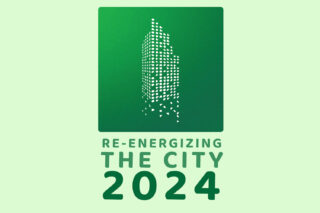*This event is occurring as a live webinar. Registrants will be emailed a link to access the program.*
Lessons from Notre Dame and Beyond
Fires continue to adversely impact our cultural heritage. This includes our historic, sacred structures like Notre Dame in Paris and St. Sava Serbian Orthodox Church in New York, as well as invaluable collections like those in Brazil’s National Museum. Other cultural heritage sites and structures, such as historic ships (Cutty Sark), bridges (Kapellbrücke Bridge, Switzerland), national monuments (Namdaemun Gate, South Korea), and tombs (Kasubi Tombs, Uganda) ahave also experienced significant fires. Whether a World Heritage Site or an important monument within our local community, they each represent significant losses when damaged or destroyed by fire.
Through detailed research into these past fires, a significant amount can be learned to better protect our shared cultural heritage. This includes understanding why fires start, how and why they progress, what can fail, and what works limiting fire-related damage. Several common themes emerge in this research, showing fire risks to historic sites and structures can be mitigated through undertaking a hazard/risk-based approach to develop tailored, risk-informed, long-term sustaianble prevention, mitigation, response, and recovery strategies that result in multiple benefits to important heritage sites and the people who care for them, use them, and protect them.
Whether using conch shells as fire alarms or wool blankets to smother fires, alternatives exist that can take advantage of local resources. When protecting cultural heritage sites and structures in the middle of New York City or in some of the remotest areas in the world, with limited resources and no fire brigades, we can make more informed decisions to better protect our heritage.
Introduction by
Bénédicte de Montlaur, CEO, World Monuments Fund (WMF)
Bénédicte de Montiaur is CEO of World Monuments Fund (WMF), the world’s foremost private organization dedicated to saving extraordinary places while empowering the communities around them. She is responsible for defining WMF’s strategic vision, currently implementing that vision in more than 30 countries around the world, and leading a team that spans the globe. Her background mixes culture and the arts, politics, international diplomacy, and human rights. Prior to joining WMF, de Montlaur spent two decades working across three continents as a senior diplomat at the French Ministry of Foreign Affairs, and most recently served as Cultural Counselor of the French Embassy in the United States.
Speaker
Chris Marrion, Founder, Marrion Fire & Risk Consulting
Chris Marrion is the founder of Marrion Fire & Risk Consulting, a special expert for NFPA, a Board Member of the National Fire Heritage Center, and an SFPE Fellow. Marrion specializes in protecting our cultural heritage from fire and disasters. His work focuses on providing risk-informed, cost-effective prevention/mitigation, emergency response and recovery strategies to protect our heritage. For over 30 years he has worked with numerous NGOs, Government entities, private and public clients including UNESCO, UNISDR, ICCROM, et al., to help create awareness, build capacity, develop codes and provide practical guidance in this regard.
AIANY Historic Buildings Committee and World Monuments Fund (WMF)





